David C. Anastasiu
PFformer: A Position-Free Transformer Variant for Extreme-Adaptive Multivariate Time Series Forecasting
Feb 27, 2025Abstract:Multivariate time series (MTS) forecasting is vital in fields like weather, energy, and finance. However, despite deep learning advancements, traditional Transformer-based models often diminish the effect of crucial inter-variable relationships by singular token embedding and struggle to effectively capture complex dependencies among variables, especially in datasets with rare or extreme events. These events create significant imbalances and lead to high skewness, complicating accurate prediction efforts. This study introduces PFformer, a position-free Transformer-based model designed for single-target MTS forecasting, specifically for challenging datasets characterized by extreme variability. PFformer integrates two novel embedding strategies: Enhanced Feature-based Embedding (EFE) and Auto-Encoder-based Embedding (AEE). EFE effectively encodes inter-variable dependencies by mapping related sequence subsets to high-dimensional spaces without positional constraints, enhancing the encoder's functionality. PFformer shows superior forecasting accuracy without the traditional limitations of positional encoding in MTS modeling. We evaluated PFformer across four challenging datasets, focusing on two key forecasting scenarios: long sequence prediction for 3 days ahead and rolling predictions every four hours to reflect real-time decision-making processes in water management. PFformer demonstrated remarkable improvements, from 20% to 60%, compared with state-of-the-art models.
WTS: A Pedestrian-Centric Traffic Video Dataset for Fine-grained Spatial-Temporal Understanding
Jul 22, 2024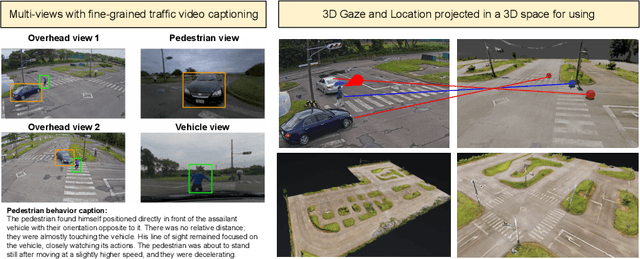
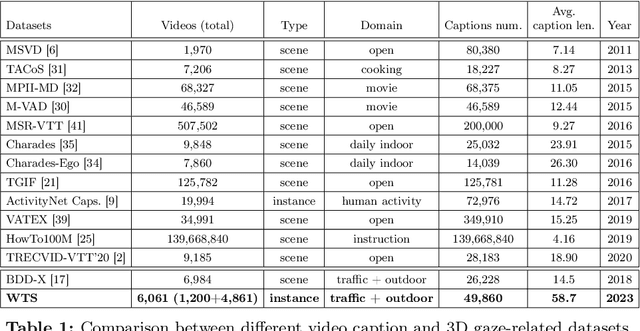
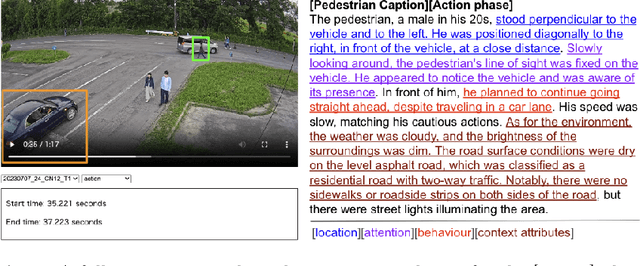
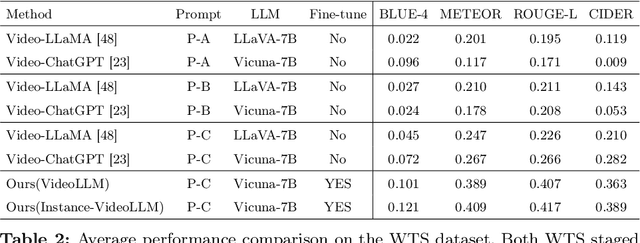
Abstract:In this paper, we address the challenge of fine-grained video event understanding in traffic scenarios, vital for autonomous driving and safety. Traditional datasets focus on driver or vehicle behavior, often neglecting pedestrian perspectives. To fill this gap, we introduce the WTS dataset, highlighting detailed behaviors of both vehicles and pedestrians across over 1.2k video events in hundreds of traffic scenarios. WTS integrates diverse perspectives from vehicle ego and fixed overhead cameras in a vehicle-infrastructure cooperative environment, enriched with comprehensive textual descriptions and unique 3D Gaze data for a synchronized 2D/3D view, focusing on pedestrian analysis. We also pro-vide annotations for 5k publicly sourced pedestrian-related traffic videos. Additionally, we introduce LLMScorer, an LLM-based evaluation metric to align inference captions with ground truth. Using WTS, we establish a benchmark for dense video-to-text tasks, exploring state-of-the-art Vision-Language Models with an instance-aware VideoLLM method as a baseline. WTS aims to advance fine-grained video event understanding, enhancing traffic safety and autonomous driving development.
The 8th AI City Challenge
Apr 15, 2024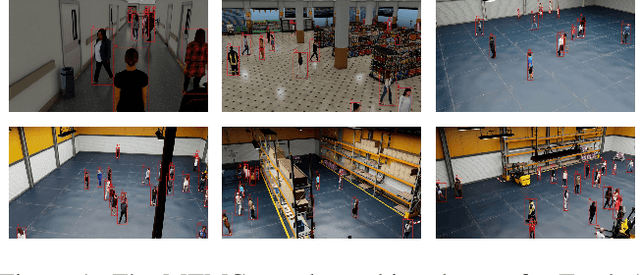
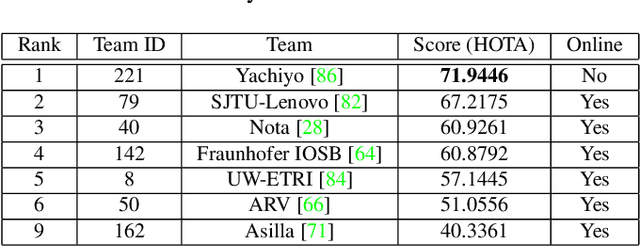
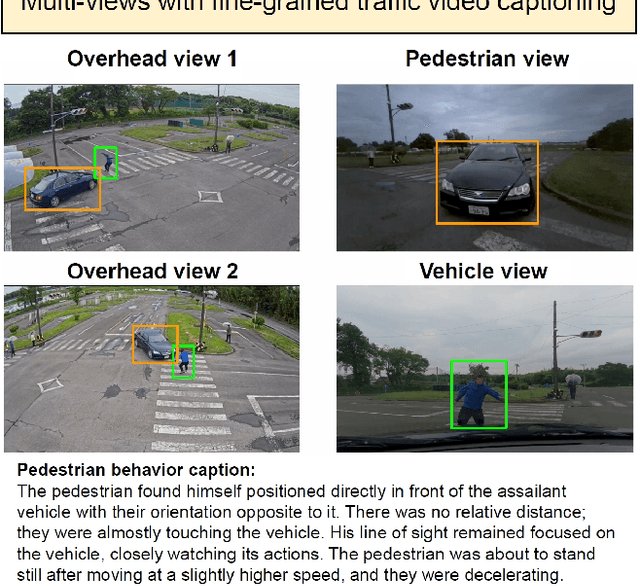

Abstract:The eighth AI City Challenge highlighted the convergence of computer vision and artificial intelligence in areas like retail, warehouse settings, and Intelligent Traffic Systems (ITS), presenting significant research opportunities. The 2024 edition featured five tracks, attracting unprecedented interest from 726 teams in 47 countries and regions. Track 1 dealt with multi-target multi-camera (MTMC) people tracking, highlighting significant enhancements in camera count, character number, 3D annotation, and camera matrices, alongside new rules for 3D tracking and online tracking algorithm encouragement. Track 2 introduced dense video captioning for traffic safety, focusing on pedestrian accidents using multi-camera feeds to improve insights for insurance and prevention. Track 3 required teams to classify driver actions in a naturalistic driving analysis. Track 4 explored fish-eye camera analytics using the FishEye8K dataset. Track 5 focused on motorcycle helmet rule violation detection. The challenge utilized two leaderboards to showcase methods, with participants setting new benchmarks, some surpassing existing state-of-the-art achievements.
Learning from Polar Representation: An Extreme-Adaptive Model for Long-Term Time Series Forecasting
Dec 16, 2023Abstract:In the hydrology field, time series forecasting is crucial for efficient water resource management, improving flood and drought control and increasing the safety and quality of life for the general population. However, predicting long-term streamflow is a complex task due to the presence of extreme events. It requires the capture of long-range dependencies and the modeling of rare but important extreme values. Existing approaches often struggle to tackle these dual challenges simultaneously. In this paper, we specifically delve into these issues and propose Distance-weighted Auto-regularized Neural network (DAN), a novel extreme-adaptive model for long-range forecasting of stremflow enhanced by polar representation learning. DAN utilizes a distance-weighted multi-loss mechanism and stackable blocks to dynamically refine indicator sequences from exogenous data, while also being able to handle uni-variate time-series by employing Gaussian Mixture probability modeling to improve robustness to severe events. We also introduce Kruskal-Wallis sampling and gate control vectors to handle imbalanced extreme data. On four real-life hydrologic streamflow datasets, we demonstrate that DAN significantly outperforms both state-of-the-art hydrologic time series prediction methods and general methods designed for long-term time series prediction.
The 7th AI City Challenge
Apr 15, 2023
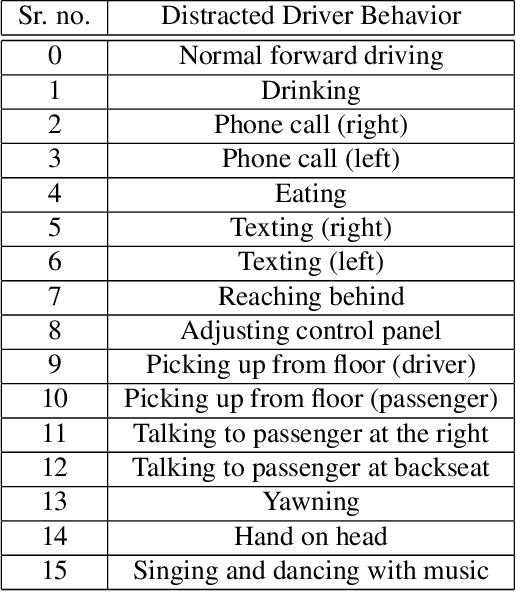
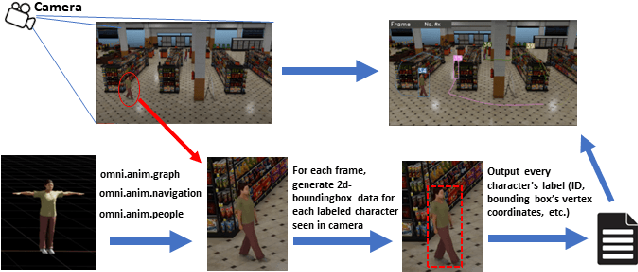
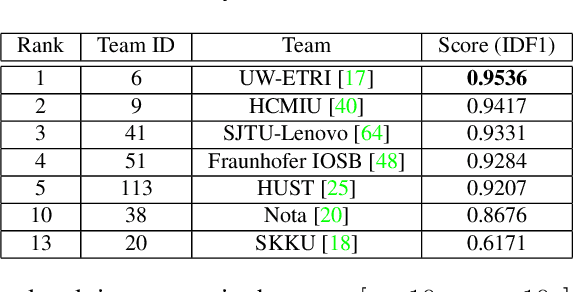
Abstract:The AI City Challenge's seventh edition emphasizes two domains at the intersection of computer vision and artificial intelligence - retail business and Intelligent Traffic Systems (ITS) - that have considerable untapped potential. The 2023 challenge had five tracks, which drew a record-breaking number of participation requests from 508 teams across 46 countries. Track 1 was a brand new track that focused on multi-target multi-camera (MTMC) people tracking, where teams trained and evaluated using both real and highly realistic synthetic data. Track 2 centered around natural-language-based vehicle track retrieval. Track 3 required teams to classify driver actions in naturalistic driving analysis. Track 4 aimed to develop an automated checkout system for retail stores using a single view camera. Track 5, another new addition, tasked teams with detecting violations of the helmet rule for motorcyclists. Two leader boards were released for submissions based on different methods: a public leader board for the contest where external private data wasn't allowed and a general leader board for all results submitted. The participating teams' top performances established strong baselines and even outperformed the state-of-the-art in the proposed challenge tracks.
An Extreme-Adaptive Time Series Prediction Model Based on Probability-Enhanced LSTM Neural Networks
Nov 29, 2022Abstract:Forecasting time series with extreme events has been a challenging and prevalent research topic, especially when the time series data are affected by complicated uncertain factors, such as is the case in hydrologic prediction. Diverse traditional and deep learning models have been applied to discover the nonlinear relationships and recognize the complex patterns in these types of data. However, existing methods usually ignore the negative influence of imbalanced data, or severe events, on model training. Moreover, methods are usually evaluated on a small number of generally well-behaved time series, which does not show their ability to generalize. To tackle these issues, we propose a novel probability-enhanced neural network model, called NEC+, which concurrently learns extreme and normal prediction functions and a way to choose among them via selective back propagation. We evaluate the proposed model on the difficult 3-day ahead hourly water level prediction task applied to 9 reservoirs in California. Experimental results demonstrate that the proposed model significantly outperforms state-of-the-art baselines and exhibits superior generalization ability on data with diverse distributions.
The 6th AI City Challenge
Apr 21, 2022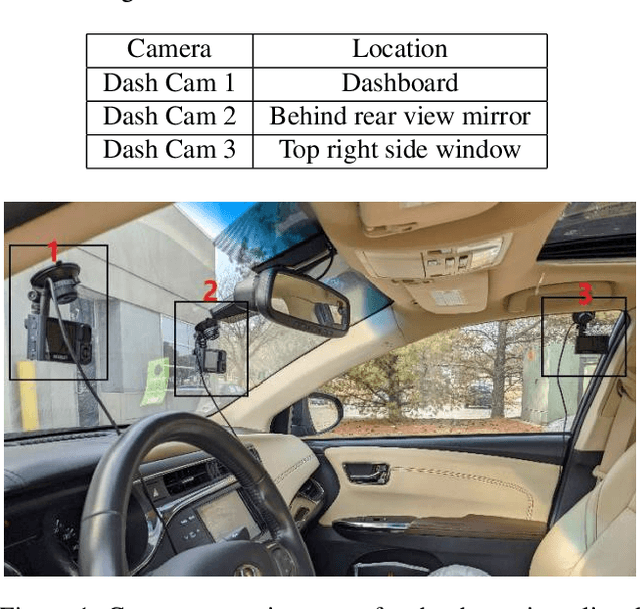
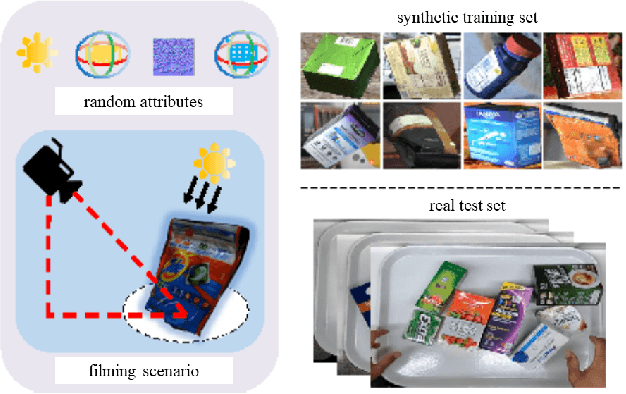
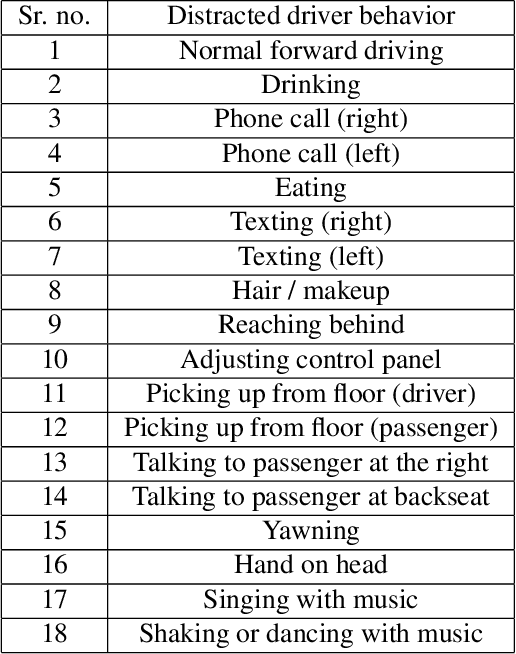
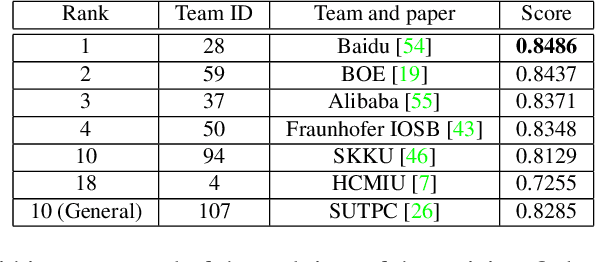
Abstract:The 6th edition of the AI City Challenge specifically focuses on problems in two domains where there is tremendous unlocked potential at the intersection of computer vision and artificial intelligence: Intelligent Traffic Systems (ITS), and brick and mortar retail businesses. The four challenge tracks of the 2022 AI City Challenge received participation requests from 254 teams across 27 countries. Track 1 addressed city-scale multi-target multi-camera (MTMC) vehicle tracking. Track 2 addressed natural-language-based vehicle track retrieval. Track 3 was a brand new track for naturalistic driving analysis, where the data were captured by several cameras mounted inside the vehicle focusing on driver safety, and the task was to classify driver actions. Track 4 was another new track aiming to achieve retail store automated checkout using only a single view camera. We released two leader boards for submissions based on different methods, including a public leader board for the contest, where no use of external data is allowed, and a general leader board for all submitted results. The top performance of participating teams established strong baselines and even outperformed the state-of-the-art in the proposed challenge tracks.
The 5th AI City Challenge
May 24, 2021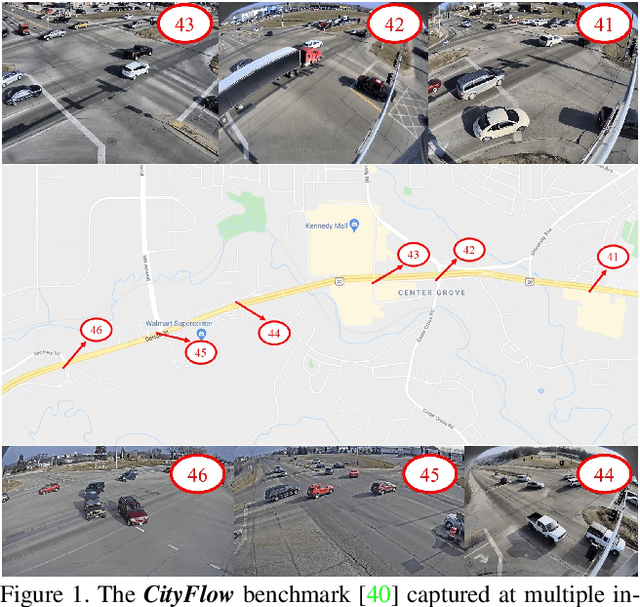
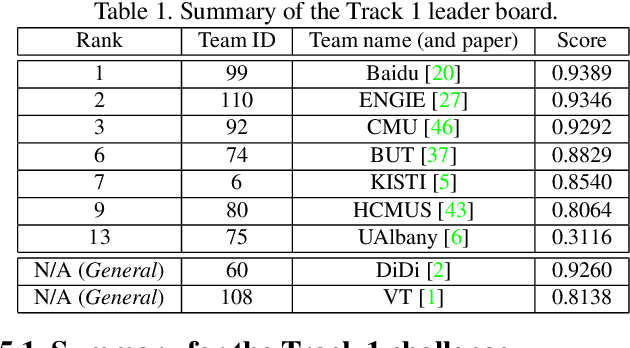
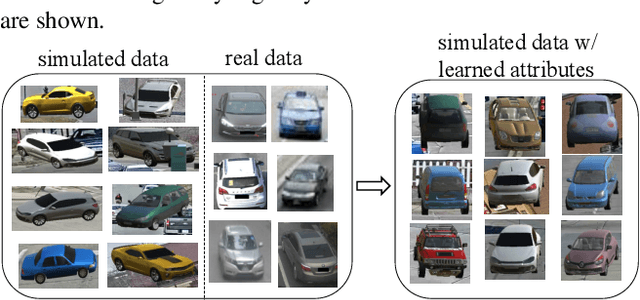
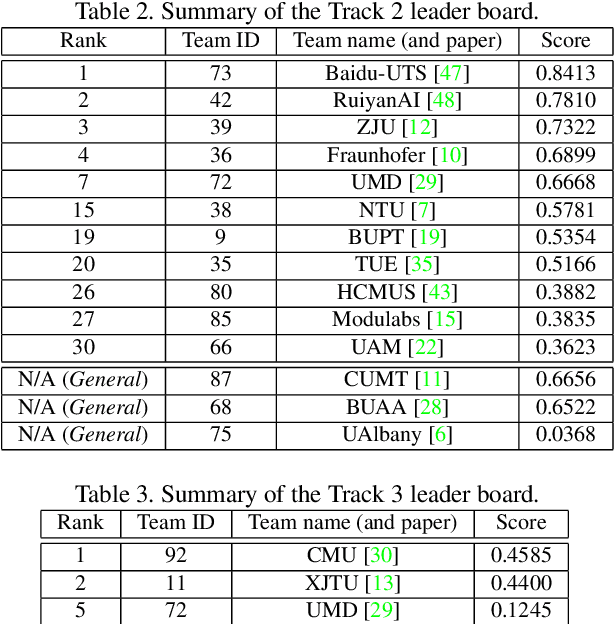
Abstract:The AI City Challenge was created with two goals in mind: (1) pushing the boundaries of research and development in intelligent video analysis for smarter cities use cases, and (2) assessing tasks where the level of performance is enough to cause real-world adoption. Transportation is a segment ripe for such adoption. The fifth AI City Challenge attracted 305 participating teams across 38 countries, who leveraged city-scale real traffic data and high-quality synthetic data to compete in five challenge tracks. Track 1 addressed video-based automatic vehicle counting, where the evaluation being conducted on both algorithmic effectiveness and computational efficiency. Track 2 addressed city-scale vehicle re-identification with augmented synthetic data to substantially increase the training set for the task. Track 3 addressed city-scale multi-target multi-camera vehicle tracking. Track 4 addressed traffic anomaly detection. Track 5 was a new track addressing vehicle retrieval using natural language descriptions. The evaluation system shows a general leader board of all submitted results, and a public leader board of results limited to the contest participation rules, where teams are not allowed to use external data in their work. The public leader board shows results more close to real-world situations where annotated data is limited. Results show the promise of AI in Smarter Transportation. State-of-the-art performance for some tasks shows that these technologies are ready for adoption in real-world systems.
 Add to Chrome
Add to Chrome Add to Firefox
Add to Firefox Add to Edge
Add to Edge